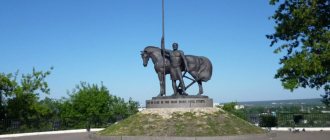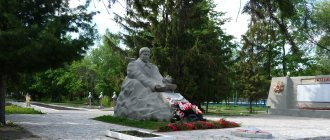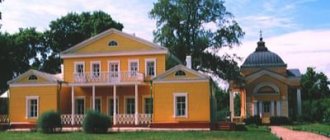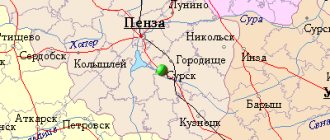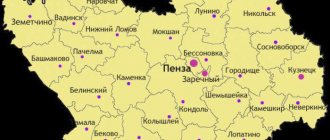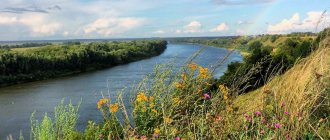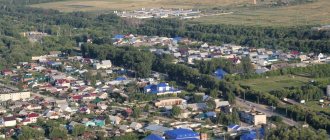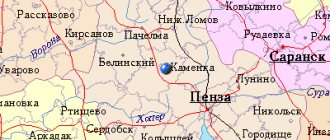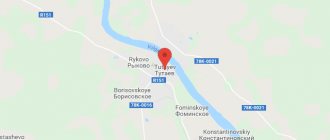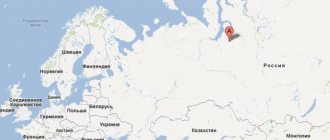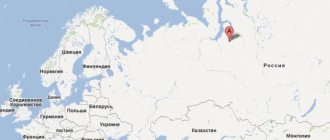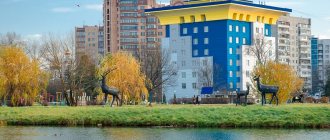Little is known about the Penza region, and even tourists rarely come to the capital of the region. Before the revolution, there were about 1,000 estates here, now only 80 remain. Some of them are abandoned, but all of them have retained the charm of the estate life of the landowners: the pompous architecture combined with hundred-year-old parks looks incredibly colorful. Great itinerary for the weekend!
The Penza region is a blank spot on the map of Russian travelers. The capital of the region, Penza, is located only 650 kilometers from Moscow, but tourists rarely come here either. However, about 80 estates from the Classical era have been preserved in the region, most of which are abandoned and crumbling, but they look incredibly picturesque. Urban defenders from the project “In the Footsteps of Forgotten Estates” are studying the estates of princes and landowners: cataloging, delving into archives, taking photographs and holding community cleanups. The founder of the project, Maxim Kostyushin, compiled a route for us through the most significant and beautiful estates in the region. A great reason to discover a new region.
Before the revolution, there were about 1000 estates in the Penza region. Previously, royal service was rewarded with lands, and the Volga region was not populated and rich in forests and rivers. In the address calendar “All of Russia” for 1902, 40 of these estates were called exemplary and outstanding from an economic point of view. The main direction of estate farming in tsarist times, and the most profitable, was the cultivation of cereals. Penza landowners sold grain and flour to other provinces and abroad. Distilleries, and later alcohol factories, sawmills, cloth and linen factories also developed.
The large and successful state and collective farms of the Soviet era were organized from former landowner model farms. And the buildings on the estates served a public function - libraries, schools, hospitals, rest homes. This has partially been preserved in our time.
Two-day route: 480 kilometers and 11 estates
It is not known exactly how many estates have survived today, but participants in the “In the Footsteps of Forgotten Estates” project found and explored about 80. Having driven through different areas of the Penza region, you will be able to see unique estates of varying degrees of preservation, built in the 18th – early 20th centuries. In some places the main house or outbuildings have been preserved, and in others only the foundation or park has been preserved.
We have selected 11 of the most picturesque estates, five of them have been restored and are occupied by various institutions, five are abandoned and are slowly being destroyed, and one is partially used. The entire route stretched for 480 kilometers. It is convenient to travel through it in two full days, with an overnight stop in Penza. If you also want to see the capital of the region, then budget for three days for the trip. The route is also conveniently divided into two parts: northern - 130 kilometers from Penza in one direction. And Yuzhny - 350 kilometers.
Mount Shihan
Ardym Shikhan is a mountain located in the Penza region on the right bank of the Ardym. This mysterious place was declared a natural monument in 1995. According to legend, in this historical place there was a battle between two khans and one of them lost his son. The father buried the young man with all honors, and in his memory ordered a high hill to be built over the grave. Shikhan, a 25 m high mound, is a unique landmark of the Penza region.
Ardymsky Shikhan has a small area, but many unique plant species grow on it, listed in the Red Book of the region. At the bottom of the hill there are meadow steppes, where narrow-leaved feather grass dominates with forbs. Its flowering is a very beautiful sight. The unique violet clumps of steppe sage and tall stems of Tyurga khama stand out against the backdrop of marinaria. The air in these places is saturated with the smell of wormwood and thyme.
Around the estates on your own: where to sleep, when and what to travel by
Roads.
Many estates are located on the outskirts of cities, while some are located right in the center of the village. The roads are generally good and paved, there are almost no dirt roads. But any passenger car can pass through them, even in winter.
When to go.
In winter it will be difficult to get into abandoned estates - all entrances and approaches are covered with snow. The best time to travel is April-May and October-November. In autumn and spring, when there is no foliage, it is not so picturesque, but you can thoroughly study the architecture of the estates. But in the summer you can stroll along the shady alleys of the 19th century manor parks.
Transport.
It is most convenient to visit estates by car, because most often there is no public transport between settlements, and you will have to hitchhike. You can go to some estates in one day from Penza: by bus or train. But you won’t be able to create a complete route using public transport.
Car rental.
International car rental services do not operate in Penza. But there are several Russian network ones - Mars, “My Car Rental” and local ones - for example, “Albatross”. Prices are approximately the same everywhere - budget foreign cars, such as Kia Rio or Hyundai Solaris, cost 2200-2400 rubles per day, Lada Vesta or X-Ray - about 2000. Some companies offer to pick up the car right at the airport - you don’t have to waste time and go into the city.
Overnight.
There are no unusual glamping sites or hotels in old estates on the route. And in general, the easiest place to stay is in Penza - there is at least some choice here. A night in the network Azimut (8.5 on Booking) costs 2,000 rubles, and hostel prices start at 500. But if you like the romance of provincial hotels, then there are hotels in every city along the route. In Nikolsk it is “Central” (Lenina, 135). In Kamenka there is a hotel of the same name in the center (Suvorova, 22) and two motels on the outskirts, on the highway - “Kuvaka” (8.6/10) in honor of the nearby mineral spring and “Wheel” (9.3/10).
Church of the New Martyrs and Confessors of Penza
The temple is dedicated to three Penza martyrs: Theodore Smirnov, Vasily Smirnov and Gabriel of Arkhangelsk. The church itself is quite new, and its construction continues to this day, but at the same time, the style of its architecture is reminiscent of the beginning of the 19th century, which is what tourists remember. Inside there are various icons, services and liturgies are held.
Address: Ushakova street-11A.
Bakhmetev-Obolensky estate, 1860s
- What's happening now:
business incubator - Location:
Nikolsk city (20,000 people)
Five generations of the Bakhmetevs and related Obolenskys owned the estate for 250 years, and it was not divided among their heirs. By the middle of the 19th century, it was one of the largest estates in the province: more than three thousand serf souls and about 20,000 acres of land (218 km² - ⅔ of the area of modern Penza), of which 90% was forest.
In the 1780s, Alexei Bakhmetev built a wooden manor house and St. Nicholas Church, which have not survived, as well as a crystal factory - the building is now abandoned. In the 1790s, his widow and son Nikolai built the Resurrection Church (not preserved), a stone factory office and a manor house, which were restored several years ago.
The founder’s grandson, Alexey Nikolaevich, having retired, settled in Nikolo-Pestrovka (the village where the estate was located) and began to study glass production. After his death, his wife owned the estate and the factory, and since 1884 the estate passed to Prince Alexander Obolensky, who became its last owner.
It turned out that several generations of village residents worked at the glass and crystal factories. Landowners were widely involved in charity and cultural and educational activities. Already before the First World War, electricity was installed in workers' homes. The owners of the estate lived permanently in St. Petersburg, but they loved Nikolo-Pestrovka and came here at Christmas, Easter and in the summer. The writer Leo Tolstoy, musician and composer Vasily Andreev visited the estate.
The two-story manor house in the classicist style faces the square and the factory headquarters on one side, and the park and pond on the other. The three-story plant administration building forms a single ensemble with the main house. In the central part of the building there was a theater hall with 400 seats, where Christmas trees were held for workers and performances were staged.
After the revolution of 1917, various educational and administrative organizations were located in the Obolensky house. Since the 1990s, the house was abandoned and gradually collapsed. In 2010, the government of the Penza region bought the estate, reconstructed it and opened a regional business incubator. The main hall has been preserved inside, which can be accessed if you arrive during the incubator’s working hours.
1 of 2
For more than 200 years, the owners of the estate collected crystal objects. The Soviet government nationalized them and later, based on this collection, created the Crystal Museum and continued to replenish it with new exhibits.
There are a dozen buses a day from Penza to Nikolsk, the journey takes about 2.5 hours, the ticket costs 300 rubles.
State Lermontov Museum-Reserve "Tarkhany"
State Lermontov Museum-Reserve "Tarkhany"
Belinsky district
The Tarkhany Museum-Reserve is located in the family estate of the Arsenyevs, Mikhail Lermontov’s maternal ancestors. The mansion was built by the poet’s grandfather Mikhail Arsenyev in 1794. The estate got its name from the activities of local peasants: they “tarkhanil”, that is, traded.
Lermontov lived in Tarkhany until he was 13 years old. Later, the poet came here to visit his grandmother Elizaveta Arsenyeva. On the estate he wrote the poems “Tambov Treasurer” and “Circassians” and the drama “Two Brothers”.
Lermontov was also buried here - in the family chapel-tomb not far from the mansion. In the same crypt are the graves of his relatives - his grandfather, grandmother and mother.
The museum ensemble includes a manor house, a tomb, two churches, which were built at the expense of Elizaveta Arsenyeva, a gatehouse, a servants' hut, a manor park with ponds and three orchards. The museum has permanent exhibitions “Lermontov in Tarkhany” and “Life of Tarkhany Peasants”. One of them contains a collection of personal belongings of the Arsenyev family, Lermontov’s lifetime publications, his manuscripts and drawings.
In the 2010s, restoration ended in Tarkhany. The museum recreated the life of the Russian nobility in the first half of the 19th century. Nowadays, the estate hosts theatrical performances, master classes on ancient Tarkhan crafts, and costume balls.
Arapovs' estate, late 19th century
- What now:
abandoned - Location:
village Prokazna (500 people)
The estate is located on a high and steep slope of the Sura River. At the beginning of the 20th century, it was “one of the well-appointed old lordly estates”, which belonged to the chamberlain (manager of the royal court - editor's note) Alexander Arapov. At the beginning of the 20th century, he lived on the estate all year round. Arapov built a parochial school for 50 students on the territory, which he maintained at his own expense, including teachers’ salaries.
After the revolution, a library and a school were located in the estate. The educational institution has been closed for five years, children go to school in a neighboring village, and the building is deteriorating. Casual travelers cannot get inside on their own - this requires permission from the local administration, you need to call them in advance. But Soviet renovations destroyed all the estate’s interiors, so there’s not much to see there. You can walk through the manor’s garden, which has partially survived, take photographs of the manor’s house and the dilapidated Church of the Archangel Michael from the outside and, if you’re lucky, get to the service held in the bell tower.
There is an interesting story connected with the Arapov estate. In the 1920s, a portrait of Varvara Rimskaya-Korsakov by the famous French painter Franz Winterhalter was found here. But the painting of the famous Moscow beauty, who conquered Napoleon III himself, was kept in Nice. How did the canvas end up in the Penza outback? It turned out that Varvara’s son married the daughter of Alexander Arapov and brought a portrait of his mother to his wife’s estate. Now the painting is kept in the Penza Art Gallery.
The Ustinov estate in Grabovo, 1890s
- What now:
psychoneurological boarding school - Location:
Grabovo village (8000 people)
The Ustinov family of nobles is one of the few that has not been interrupted, and its representatives still live in France and the USA. The estate of their ancestors is an outstanding architectural complex that reflects the process of revival of estate construction in Russia in the late 19th and early 20th centuries. Construction of the luxurious manorial estate with a greenhouse, designed by St. Petersburg architect Victor Schröter, began in the 1890s. He designed a dozen buildings in St. Petersburg and was the official architect of the Imperial Theaters of Russia.
The Grabov Palace House evokes associations with European residences. The two-story building (with a residential basement) is grouped from volumes of different heights around a monumental central part with a portico and balconies. Both facades are decorated with bay windows, round towers with spherical domes and windows of various shapes and sizes. Simultaneously with the construction of the palace, a park with a fountain, flower beds and two ponds was laid out. Part of the territory was occupied by an orchard bordered by spruce plantings.
In 1916, Nikolai Ustinov became the owner of Grabovo, who left the estate three years later. The Soviet government nationalized the estate and placed a machine and tractor station on its territory, then an orphanage, then a home for the disabled and a psychoneurological boarding school. In 2000, the estate was restored, and it was occupied by the administration of the Grabovsky psychoneurological boarding school.
The fact that the building was never abandoned allowed it to be preserved in a condition close to its pre-revolutionary state.
This is one of the few estates in which the interior decoration has been preserved - elegant stucco, exquisitely decorated fireplaces and a carved oak staircase. If you want to visit the complex, you must notify the boarding school administration in advance. They allow you to inspect the building not only from the outside, but also from the inside.
Bitskogo estate, mid-19th century
- What now:
abandoned - Location:
Stepanovka village (1100 people)
At the end of the 17th century, these lands were granted to the service people Stepanov. In 1710, two manor houses were already built, and in 1795 - three. In the mid-19th century, landowner Varvara Kugusheva, mother of the revolutionary populist Porfiry Voinoralsky, built a house with services on the estate and laid out a park. Subsequently, the estate belonged to the princess’s confidant A.V. Bitsky.
The main house is a one-story brick building with a mezzanine, which combines elements of late classicism and stylized forms of ancient Russian architecture. In the manor park, linden alleys, lilac bushes and several apple trees have been preserved.
There is a mention of the sale of Bitsky’s estate in the newspaper “Penza Provincial Gazette” dated May 10, 1910:
Manor plot from the estate, formerly
Bitskikh, near the village. Stepanovka, Ishim volost, Gorodishche district, and containing a total of 77 dessiatines 2006 fathoms, including: under the estate 3 d. 558 s., under the garden 1 d. 1217 s., under forest and bushes 4 d. 1564 s. , arable land 44 d. 1464 pp., haymaking 19 d. 887 pp. and uncomfortable 4 d. 1116 p. The plot is valued by the Bank Branch at 24,000 rubles.
The distance from the district town is 20 versts, the volost government and postal station is 7, and the railway station is 15. The following buildings are for sale with the plot:
- The house is stone with a mezzanine, covered with iron.
- The stable is wooden with two sheds, covered with planks.
- The stable is wooden, covered with planks.
- Basement lined with oak.
- The outbuilding is wooden, covered with iron.
- The barn is wooden, covered with planks.
In Soviet times, the estate housed the office of the Stepanovsky state farm, from which a bunch of agricultural literature, accounting logs and other waste paper remained. For a long time the house was in good condition, although it was abandoned. In the summer of 2016, there was a fire in the building: all the wooden structures burned out and the roof collapsed. After that, all the windows of the estate were boarded up.
Cave Monastery
The cave monastery is located near the village of Narovchat on the border of the Penza region. The joint creation of man and nature consists of three floors (tiers) of passages with cells dug by monks. According to legend, the founder of the monastery was the visiting monk Skan, who once discovered a narrow passage into the caves. He widened the entrance and dug a cell in which he led a reclusive life.
Subsequently, Skat found followers, and so one of the grottoes turned into an underground church, gradually these places expanded, and over time, up to 20 cells were created, connected by passages. The total length of the cave monastery was about 634 m, including 2 undiscovered tiers.
The leadership of the Penza region issued an order to reconstruct a historical and in its own way beautiful place. Currently, an arch has been laid at the entrance to the caves; builders are expanding the entrance and strengthening the walls and vault.
Tyurin's estate, early 19th century
- What now:
Museum of Folk Art - Location:
Penza (516,000 people)
At the beginning of the 19th century, the wooden mansion belonged to court councilor Varvara Zagoskina, cousin of the famous Russian writer Mikhail Zagoskin and aunt of Lavrenty Zagoskin, the famous explorer of Alaska, the Aleutian Islands and California. Around the building, part of the old manor park has been preserved, which recently received the status of a natural monument - now it will be more carefully protected.
For a short period at the end of the 19th century, the estate was owned by Baron Otto von Einem, brother of the then famous Moscow confectioner Ferdinand Theodor von Einem. During the Soviet period, the enterprise created by the “chocolate king” von Einem became the world-famous confectionery factory “Red October”.
Advertising of Einem products
Otto von Einem was involved in charity work and the development of craft labor in the province. During his time, a fireplace was installed in the office of the mansion, lined with multi-colored majolica tiles made in Germany, decorated with floral and geometric patterns. Above the mantelpiece there is a ceramic relief with a genre scene from medieval city life. After von Einem’s death, the estate was bought by Penza timber merchant Stepan Tyurin.
The house has retained its special historical flavor to this day thanks to high-quality restoration.
Now the mansion building houses the Museum of Folk Art. One of the central halls of the exhibition is Tyurin’s office, which was restored in 1974. The portrait hanging on the wall was drawn from the only surviving lithograph by Tyurin.
Lithograph of Tyurin Stepan Lavrentievich (1846-1911), timber merchant, merchant of the 1st guild.
6. Okhotnikov’s estate, 1860s
- What now:
high school - Location:
Cherkasskoye village (1200 people)
The estate came to the Okhotnikov dynasty in 1797. The flourishing of the estate is associated with four generations of this rich family. The idea of the castle house belongs to Vladimir Okhotnikov. Perhaps this is one of the first estate buildings of the famous Art Nouveau architect Pyotr Boytsov. He is the author of the Meyendorf estate (now the residence of the President of Russia in Barvikha), the Rukavishnikov estate and fair buildings in Nizhny Novgorod and various castle houses in the Moscow and Vladimir regions, in Moscow and Kyiv.
The estate then and now.
The palace was completed by the merchant Vasily Andronov: he completed the rich interior decoration of the rooms, the fireplace room, installed a telephone, electricity and running water. The merchant's son Vasily Vasilyevich owned the estate until 1917. On the south-eastern border of the manor park, lilac alleys have been preserved. On the eastern side there were once greenhouses, greenhouses and a pond with a figure of a cast-iron bear, from whose mouth a fountain gushed.
In 1922, a school was opened in the palace, partially redesigned inside, which is still operating here. From the pre-revolutionary interiors, the fireplace room and some elements of room decoration have been preserved. Since 2000, the school has operated a local history museum. To get inside the palace and explore the museum, you need to negotiate with the school administration.
State Museum of A.N. Radishcheva
State Museum of A.N. Radishcheva
Kuznetsky district
The museum is located in the restored family estate of the noble Ablyazov family, relatives of the writer and philosopher Alexander Radishchev. The stone manor house was built by the writer’s great-grandfather Grigory Ablyazov. Here Radishchev was born, spent his childhood, and later worked on the economic treatise “Description of My Possession.”
In 1736, the Transfiguration Church was built on the territory of the estate, which has survived to this day. However, the iconostasis was destroyed during the Soviet years. In the late 1990s, another one was moved here from a closed church in a neighboring village. Inside the Transfiguration Church there is a family crypt of the Radishchevs. The writer's parents, brother and youngest son are buried there.
In the 19th century, the mansion fell into disrepair and was demolished. The building was restored on the old foundation in 1995, but its exact appearance could not be repeated. Restorers used drawings and plans of other ancient estates in the Penza region. Inside, the interiors of 19th-century manor houses were reconstructed.
Today, the museum ensemble also includes the former zemstvo school in the village of Verkhnee Ablyazovo. It houses the main exhibition. Personal belongings of Radishchev and members of his family, rare lifetime publications and handwritten copies of “Journey from St. Petersburg to Moscow” are exhibited here.
Voeykov's estate, 1914
- What now:
abandoned - Location:
Kamenka city (34,000 people)
The Kamenskaya estate is one of the most beautiful in the region, although it is in disrepair. The composition of the complex takes into account the landscape as much as possible. The estate is located on a hill within the city and is surrounded by forest, so the two-story palace can be seen from afar. The entire ensemble is designed in the neoclassical style. The decoration of the building remains a small oval hall with columns, the decoration of which has been partially preserved. The territory is not guarded, and anyone can enter the estate. But you have to be careful: the building is in disrepair.
The estate was owned by a Russian military leader, close to Nicholas II, Vladimir Voeikov. In 1913, he organized the production and sale of water from the Gremyachiy Klyuch spring in the village of Kuvaka, a few kilometers from the estate. It was served at the royal court and delivered to many Russian cities. Water production is still in operation, and the Museum of Living Water operates.
After the revolution, the estate was destroyed. But later they made repairs, and in Soviet times it housed a district hospital, a rest house for railway workers and a school. And during the Great Patriotic War - an evacuation hospital.
More than 30 buses and two trains run from Penza to Kamenka per day. The journey takes about two hours, the ticket costs 200 rubles.
Ladyzhensky estate, late 19th century
- What's happening now:
library and horse farm - Location:
Zavivalovka village (500 people)
Presumably, Dmitry Voeikov built the master's wooden house and, following the example of his brother Vasily, who founded the famous stud farm in the village of Lavrovo, Tambov province, in the 1810s, also founded a stud farm in Zavivalovka in 1827–1830.
Fyodor Ladyzhensky, Dmitry's grandson by daughter, became the last owner of the estate. It was he who was involved in its large-scale improvement. In the address calendar “All Russia” for 1902, Zavivalovka is listed among the “outstanding farms of Russia.” Ladyzhensky opened the only first-class lower agricultural school in the province, with partial government funding. In 1902, there were 301 students studying there.
In 1908–1913, a new capitalist-type estate was built. The complex consisted of a stud farm and a house, separated from the village by the Yunga River. To the east of the estate there are stables and two residential buildings, to the west there are warehouses and a steam mill. In front of the main house was a park that sloped down a slight slope to a dammed river. The park has preserved two very old linden alleys leading down to the pond.
After 1917, Fedor and his family emigrated. In 1925–1928, a state farm-technical school was located in the estate; since 1929, a horse farm for raising Oryol trotters and transport horses was organized. During this period, new outbuildings were built and old outbuildings preserved from Ladyzhensky were rebuilt. The main house housed the stud farm's office. Until 2002, the equestrian school housed the rural secondary school. In total, 11 buildings have survived from the former estate, many of which are abandoned. In one of them there is a library, where there is a small museum. The horse farm is slowly but still being revived. The park, unfortunately, is being built up with private houses.
Museum of Performing Arts named after. V. E. Meyerhold
The house where the famous theater director lived many years ago now houses the most popular museum in the Penza region. The museum itself was opened in 1984, 110 years after the birth of the director. Inside are exhibits directly or indirectly related to Meyerhold, his personal belongings and correspondence. In 1999, not far from his house, a monument to the director was opened which can be visited at the same time as the museum.
Address: Volodarskogo street-59.
Nadezhdino estate, 1790s
- What now:
abandoned - Location:
Kurakino village (1200 people)
The period of prosperity and the creation of the palace and park complex here falls on the activities of Prince Alexander Kurakin. Initially, the estate was located in a village, and the manor house was wooden, but Kurakin moved it to a picturesque place on the high bank of the Serdoba River.
Construction of the stone palace began in 1792. In a letter to his brother, Prince Alexander Kurakin wrote that he himself drew plans for the facades and interior layout, and determined the dimensions of the palace. The core of the ensemble is a three-story palace, which was previously crowned with a dome and spire. According to various sources, the palace had from 64 to 80 rooms. Part of the ensemble was also a park with an area of about 100 hectares (1×1 kilometer).
In 1922, there was a fire in the estate, after which the palace was not restored. In Soviet times, the outbuildings housed the regional house of party education, a surveying technical school, a home for the disabled and a neurological clinic, which closed only in the 2000s. Currently, the palace has lost its roof and interfloor ceilings. In 2014, the complex was privatized and a plan for its revival was developed, which so far only includes the restoration of the outbuildings, but not the palace. The entrance to the estate is still free, but the passages through the windows are blocked. There is a flooring installed inside the palace, and architectural lighting is installed on the facades. The estate even has its own Instagram @nadezdino.
A guest house with five rooms was opened not far from the estate. But they don’t rent out rooms individually—you have to rent the entire house, which costs 30–35 thousand rubles per day. You can book through private messages in the VKontakte group “Nadezhdino Estate”. But you can stay in the city of Serdobsk, 15 kilometers from Nadezhdino. There are two hotels there - “Devyatochka” and “Serdobsk”. A room for one night costs from 1,500 rubles.
A dozen buses a day and two trains run from Penza to Serdobsk. The journey takes two to three hours, the ticket costs 250–300 rubles.
View this post on Instagram
A post shared by Mikhail Chuvykin (@mikhail_chuvykin)
Old Ryazan, Spassk
Although modern Ryazan is located in a completely different place, Old Ryazan remained on the territory of the Penza region and stands here as a reminder of the former glory of the Ryazan principality.
Initially, the city where old Ryazan is now located was called Pereyaslavl-Ryazan, it was the capital of the young principality of Ryazan, and its population was no more than 8 thousand people. Several decades later, after the state gained formal independence, news came from the inhabitants of Volga Bulgaria about Batu’s campaign to the West. Many ambassadors were sent to other Russian principalities, but not one came to the aid of their neighbor, and after the capture the city was completely burned by the horde. Today, only ruins remain of the fort. Archaeological excavations are still underway at this site, and tourists upon arrival here can at least partially understand how their ancestors lived.
Ustinov estate in Bekovo, early 1830s
- What now:
nursing home - Location:
Bekovo village (6100 people)
The estate is located on the banks of the Khopyor River. Like other county landowners, the Ustinovs were impressed by the nearby noble estate of Nadezhdino and copied its architecture.
The name of the creator of the estate, Adrian Ustinov, appeared in investigative cases against the Decembrists. However, due to the lack of solid evidence of involvement in secret societies, Ustinov was not arrested. Adrian Ustinov was well acquainted with Pushkin. According to the historian Lyubov Kraval, Pushkin in 1833, returning to St. Petersburg from the Orenburg province, where he collected material for the “History of the Pugachev Rebellion,” visited Ustinov’s estate.
The Ustinov estate occupied a third of the village of Bekovo. It consisted of a manor house in the classicist style (built in the 1830s), five stone residential buildings, a garden, a greenhouse, outbuildings and a sawmill. Over time, the Ustinov estate was surrounded by rural buildings, a large market square, and station buildings, which were formed after Adrian Ustinov built a small railway line that connected Bekovo with the Vertunovskaya station. In 1877, near Bekovo, in the forest that belonged to the Ustinovs, on Mount Shikhan, a kumys and medical institution was opened for patients with tuberculosis.
Nowadays, the “Gothic castle” and the fence have been preserved from the Ustinovs’ estate in a reconstructed form. The Church of the Intercession was destroyed in 1934, and 25 years later the cemetery was also destroyed. The park is in disrepair. Several surviving manor buildings are occupied by a nursing home.
Trinity-Skanov Monastery
Trinity-Skanov Monastery is a convent located in the Penza region. This is one of the most beautiful and ancient monasteries in the Penza region. It was founded in the 17th century. and at first it was a men's monastery. According to one version, the name of the monastery comes from the Skanova River, which once flowed in these places. According to another version, he was named after the surname of a local landowner, boyar Iskansky.
Initially, the Trinity Church was wooden, but after two fires in 1795 it was built of stone. The two-story, 5-domed cathedral had two altars: one - the Assumption of the Mother of God, the second - in the name of the Life-Giving Trinity. Over time, the monastery grew, and numerous service, residential and outbuildings were erected in the holy, beautiful place. However, by 1917, after the revolution, the Trinity Cathedral was closed.
In 1939, the Trinity-Skanov Monastery resumed its activities as a convent. Today it has been completely restored and is an architectural monument of the transition period from Baroque to Classicism. The main emphasis in it is on the monastery and the nearby bell tower - the bright colors of the walls and beautiful decorative elements give the buildings a very colorful look. The towers located in the corners of the cathedral create a feeling of monumentality and solemnity, and also give the building the appearance of a fortress. In these places, previously erected buildings were preserved; only the hospital church was destroyed. The main shrine of the monastery is the miraculous icon of the Trubchevskaya Mother of God; pilgrims come to it from different parts of the world.
Golitsyn estate, late 18th century
- What now:
abandoned - Location:
Zubrilovo village (300 people)
The estate is located on the high bank of the Khopyor River, on the border of three regions - Penza, Tambov and Saratov. The ensemble was mainly formed in the 1780–1790s under Sergei Golitsyn and his sons. The estate includes a palace, a church, a bell tower, a park with a memorial chapel and a ruined tower, a hospital building, four residential buildings and a huge park stretching along the slope for one and a half kilometers.
The palace, church and bell tower were built according to standard designs, possibly by Jean-François de Nefforge, a Belgian architect who worked in the Rococo style. The architectural basis of the palace is the type of “house in French style”. The protruding six-column semi-rotunda and the two-flight staircase descending into the park are still impressive. On the other side of the ravine there is a ruined tower, built, according to legend, by French prisoners in the 1810s.
The estate was visited by many famous people: fabulist Ivan Krylov, statesman and poet Gavriil Derzhavin, memoirist Philip Vigel, artists Vasily and Elena Polenov, Victor Borisov-Musatov.
On October 19, 1905, during peasant unrest, the estate was destroyed and the palace was burned. They did not restore it and sold it to the treasury even before the revolution. In the 1920s, the estate was occupied by a peasant commune. In 1936–1937, the palace was rebuilt, and the outbuilding was overhauled to become a party recreation center. Later, the estate housed a hospital and a tuberculosis sanatorium. The bell tower was used as a water tower, so the bells and completion have been lost.
Now the palace has no roof, interfloor ceilings and stairs - they are in the stage of collapse. The church has been renovated and services have been held since 1990. But the chapel is almost destroyed.
Author: Maxim Kostyushin. Photo: Maxim Kostyushin, from the group “In the Footsteps of Forgotten Estates.”
